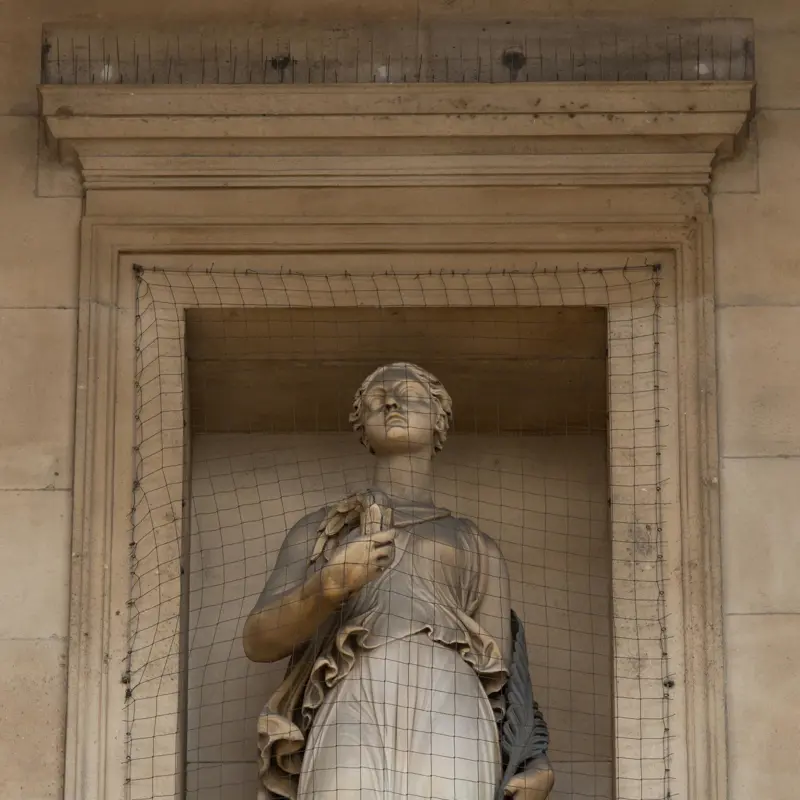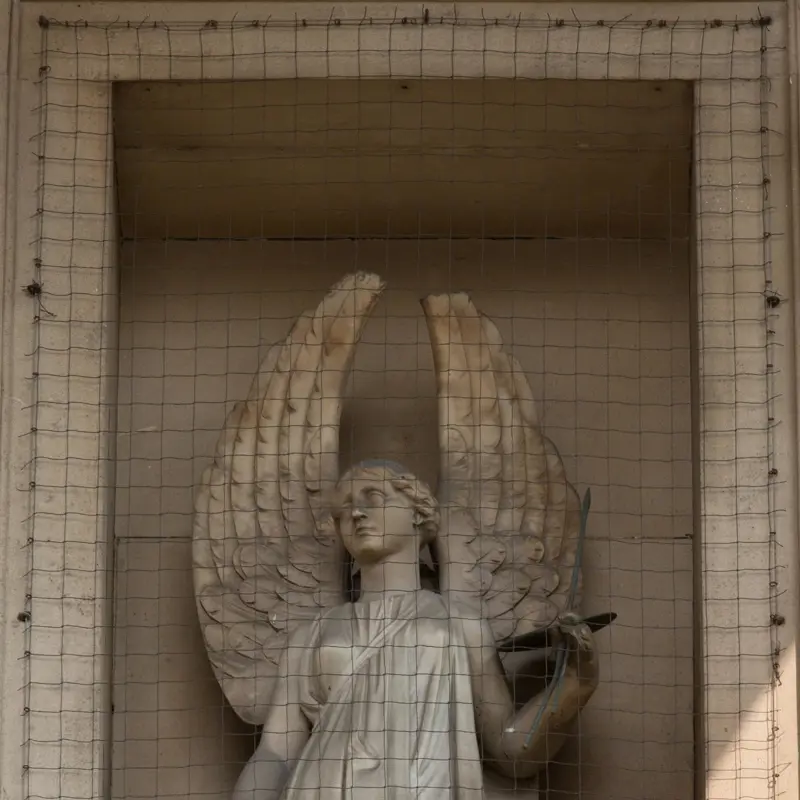Probably by Edward Hodges Baily, 'Trophy', 1826-32
About the work
Overview
This female figure, along with its pair, accompanies a figure of Victory on the façade above the National Gallery’s West Entrance. They, and five related sculptures depicting female figures, are the work of the British neoclassical sculptor Edward Hodges Baily. This pair of women do not carry any attributes, so it is hard to identify who they are.
The National Gallery was established in 1824, occupying two sites on Pall Mall before it was opened to the public in its present location on Trafalgar Square by Queen Victoria on 9 April 1838. During the construction of the Trafalgar Square building, its architect, William Wilkins, was forced to use masonry and statuary recycled from other projects in a cost-cutting exercise imposed by the government. This pair of female figures, and a winged pair now holding paintbrushes and palettes, which all now adorn the Gallery’s façade, were originally commissioned by George IV either for Marble Arch or Buckingham Palace.
Key facts
Details
- Full title
- Trophy
- Artist
- Probably by Edward Hodges Baily
- Artist dates
- 1788 - 1867
- Part of the group
- West Entrance Sculptures
- Date made
- 1826-32
- Medium and support
- Portland stone
- Acquisition credit
- Commissioned by the Office of Works for the Marble Arch, and installed on the Gallery by 1838
- Inventory number
- H210
- Location
- Gallery Exterior: West Entrance
- Collection
- Contextual Collection
About this record
If you know more about this work or have spotted an error, please contact us. Please note that exhibition histories are listed from 2009 onwards. Bibliographies may not be complete; more comprehensive information is available in the National Gallery Library.
Images
About the group: West Entrance Sculptures

Overview
The National Gallery’s West Entrance is surmounted with a figure of Victory, framed by another full-length, draped female figure in each of the niches to left and right. As this pair of flanking figures do not carry any attributes, it is hard to identify who they represent. All three statues are the work of the British neoclassical sculptor Edward Hodges Baily. They were not made for the National Gallery, but were commissioned by King George IV for other structural projects in central London - in the case of the Victory figure, for the Marble Arch, a monument intended to celebrate Britain’s defeat of the French in the Napoleonic Wars.











